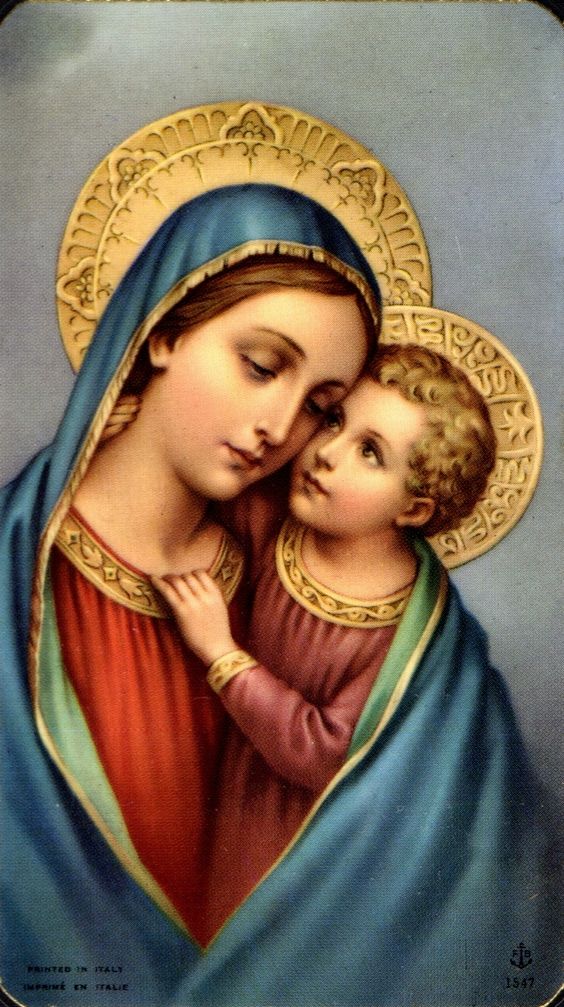The Queen: Editorial: Marian Devotions and The Spirit of Vatican II
Fr. J. Patrick Gaffney, SMM
A recent issue of the Italian Marian review, Madre di Dio, highlighted a letter from one of its readers requesting the cancellation of his subscription. The reason for the abrupt cancellation? On a recent trip to the countryside he stopped at the local parish church. There were, he noticed, numerous candles burning before an icon of Our Lady yet only one solitary votive light before a painting of Jesus Crucified. He was so upset, so he writes, that he burst out in tears for “Mary was more honored than Jesus.” Marian magazines are, in his opinion, fostering such distortions, evidently against the spirit of Vatican II.
By strange coincidence, the review’s editorial described a new French book on Our Lady, entitled “Marie, tout simplement” (Mary, in all simplicity), put out by a Catholic publishing house. Similar to the “Quests for the Historical Jesus” … and the present day “Jesus Seminar,” the book believes that Mary also must be stripped of all the accretions of dogma and devotion which have so distorted her reality. She is, in all simplicity, the mother of Jesus. Nothing more should be said of her. The author apparently believes that her opinion is also in accord with the spirit of Vatican II.
The letter and the book represent a current of thought which is very much alive today, especially among those who would classify themselves as “intellectuals”: popular devotion to Mary is once again exceeding the boundaries of orthodoxy. “Once again,” for the second Vatican Council supposedly had toned down respect for the Mother of God to a bare minimum; in recent years so it is said, there has been a resurgence in exaggerated devotion to the Mother of God. Often beginning with a description of an alleged apparition of Mary – in no way approved by the Church – or with a bizarre and evidently unorthodox expression of devotion, it is irrationally concluded that almost all forms of popular devotion to Mary are out of sync with Vatican II. The opinion looks with some disdain on the revival of Marian congresses, the popularity of pilgrimages to Marian shrines, new religious congregations in honor of Mary, the world-wide interest in St. Louis de Montfort’s consecration to Our Lady, not to speak of pictures of the Holy Father crowning and even kissing statues of Mary. All this indicates, so this opinion affirms, that the so-called “spirit of Vatican II” concerning Mary is being violated.
Notice that it is that highly subjective and amorphous “spirit” of Vatican II which is called on to support allegations that many traditional manifestations of devotion to Mary should be considered exaggerations. The balanced texts of the Council concerning Our Lady prove just the opposite: “The sacred synod … admonishes all the sons and daughters of the Church that the cult, especially the liturgical cult of the Blessed Virgin be generously fostered and that the practices and exercises of devotion towards her, recommended by the teaching authority of the Church in the course of the centuries be highly esteemed and that those decrees which were given in the early days regarding the cult images of Christ, the Blessed Virgin and the saints, be religiously observed.
But it strongly urges theologians and preachers of the word of God to be careful to refrain as much from all false exaggeration as from too summary an attitude in considering the special dignity of the Mother of God (Constitution on the Church, #67). No other Council of the Church has spoken so beautifully, so profoundly, and so at length about Mary as the second Vatican Council. Problem is that the texts themselves are so often ignored and replaced by whatever one believes is the spirit – or poltergeist – of the Council.
Catholics do not prefer one’s own private interpretation of the faith over the clear proclamation of the Body of Christ. Impelled by the in-dwelling Spirit, the Church’s ongoing life, teaching and worship have fostered the authentic thought of this century’s ecumenical council. The Church, the pillar and ground of truth, has especially through example and constant teaching of its Chief Shepherd, encouraged the present renewal of devotion to Mary which, to the dismay of some, is flourishing throughout the Church. (Is it a coincidence that the same can be said about the ever growing movement of public – and at times perpetual – adoration of the Most Blessed Sacrament?) To invoke the Second Vatican Council’s “spirit” as proof that the contemporary deepening of devotion to Mary is out of order, is another example of the subjective relativism which has sadly gripped many of today’s Catholics.
The errors of these “critical” and “scrupulous” devotees as exemplified both ln the letter and the book mentioned in Madre di Dio are well summarized by Saint Louis de Montfort: “Critical devotees are for the most part proud scholars, people of independent and self-satisfied minds, who deep down in their hearts have a vague sort of devotion to Mary. However, they criticize nearly all those forms of devotion to her which simple and pious people use to honor their good Mother just because such practices do not appeal to them … They do untold harm to devotion to Our Lady. While pretending to correct abuses, they succeed only too well in turning people away from this devotion” (TD 93). And verbalizing what is intuitively known by Catholics in general, Montfort writes: “We never give more honor to Jesus than when we honor HlS Mother and we honor her simply and solely to honor Him more perfectly. We go to her only as a way of leading us to the goal we seek, Jesus her Son” (TD 94).

Editorial
From time to time, The Queen will republish Editorials or create new Editorials on various topics.


